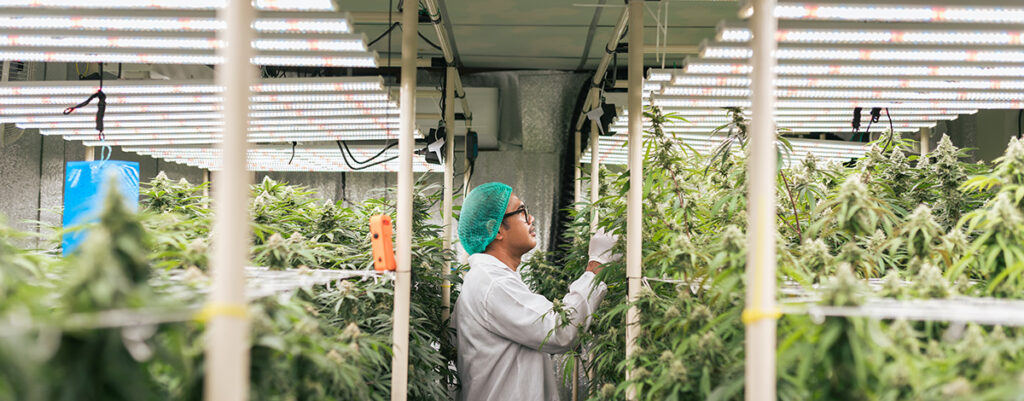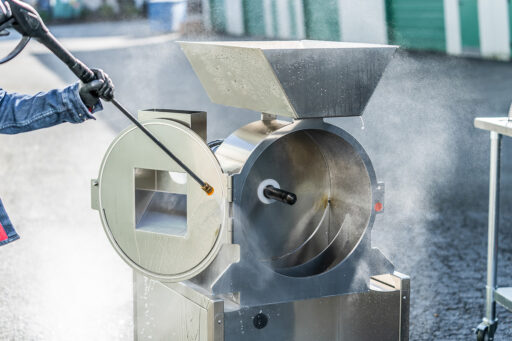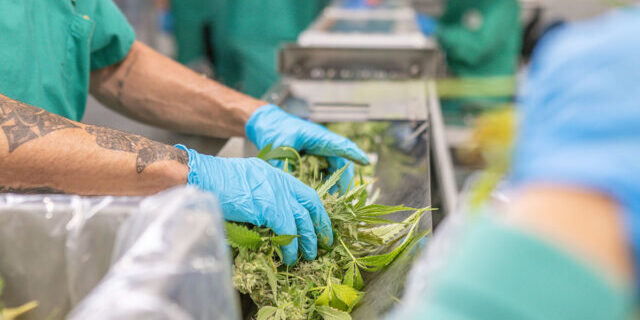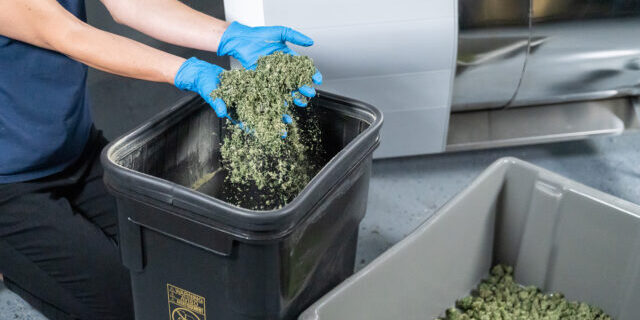A Comprehensive Guide to Cannabis Quality Control
As the cannabis industry evolves, the demand for stringent and effective quality control measures is increasing. In virtually every landscape where regulated legal models for cannabis production and selling are emerging, so too are strict quality assurance (QA) and control methods. For instance, Canada was one of the first countries to introduce specific guidelines related to cannabis quality control.
For small cultivators and large-scale growers alike, a comprehensive quality control strategy is essential to ensure consumer safety, regulatory compliance, and to maintain market competitiveness. With the right strategy, companies can ensure their products are safe, potent, and consistent in quality. This is crucial at a time when studies show that consistent quality is a key consideration for cannabis consumers.
In this guide, we’ll discuss the growing importance of quality control in the cannabis industry and explore the methodologies and frameworks cultivators can use for ongoing product quality management, ensuring regulatory compliance, and consumer safety.

The Importance of Cannabis Quality Control
The cannabis market is growing at an incredible rate. By 2030, analysts predict the industry will be worth $444.34 billion, growing at a CAGR of 34.03%. While widespread legalization represents an excellent opportunity for cultivators, every country and regulatory body imposes specific standards on growers to ensure consumer safety.
Just as companies in the pharmaceutical and food industries are subject to guidelines like Good Manufacturing Practice standards, cannabis cultivators must follow similar rules to ensure their products are fit for human consumption.
Compliance guidelines in every country require growers to follow specific rules in everything from cannabis cultivation practices to product and potency testing and distribution. Failure to adhere to these standards puts your organization at risk of significant fines and possible legal ramifications.
Alongside the risk of legal consequences and fines, companies who fail to adhere to regulatory requirements linked to cannabis quality standards face issues such as:
- Product recalls: Inadequate quality control can lead to product recalls, which are both expensive and detrimental to consumer trust.
- Reputation damage: The impact of a safety issue, product recall, or another issue with product quality can cause irrevocable damage to a brand’s reputation. This can harm your ability to maintain profits in an industry heavily dependent on consumer trust.
- License revocation: To protect consumers from potentially dangerous products, regulatory bodies could choose to revoke a company’s license to grow and sell cannabis based on the results found during product testing.
Beyond Compliance: Quality Control and Consistency
The rising demand for stringent cannabis quality control isn’t just a result of evolving regulatory compliance standards. It’s also crucial to ensure cannabis growers can consistently deliver the same level of excellence to their customers. Consumers expect a high standard of production from cannabis manufacturers today, with “high-grade products” achieving the greatest levels of demand.
Your ability to scale your business and unlock additional profits depends not only on using the right cultivars and technology but also on your ability to adhere to customer expectations. A comprehensive quality management system and testing strategy ensure you can guarantee your product retains consistent characteristics, from potency to terpene profiles.
It also helps retain the trust of your buyers by ensuring you’re advertising your products and their characteristics truthfully. One study recently found that over 80% of the CBD products tested from a particular seller contained either more or less CBD than advertised.
What’s more, as a vendor of a consumable product, it’s your responsibility to ensure the products you sell are genuinely safe for consumption. Cannabis products are susceptible to a range of mold, mildew, and contaminants, from pesticides to heavy metals and salmonella. One study, in which researchers tested 20 different cannabis samples from dispensaries in California, found 90% contained contaminants.
Ensuring your product doesn’t pose a risk for consumers isn’t just good for your brand; it’s also an important way to differentiate yourself from the competition.
Key Components of Cannabis Quality Control
Implementing a comprehensive cannabis quality control system requires multiple steps. There’s more to the process than simply investing in working with testing laboratories or automated analytical testing solutions.
Here are the factors we recommend carefully considering when implementing your quality management strategy.
Good Manufacturing Practices (GMP)
Good Manufacturing Practice (GMP) guidelines provide business owners with a system of processes to follow to ensure products are produced according to consistent quality standards. Though these guidelines typically apply to pharmaceutical and food products, they’re also increasingly being applied to cannabis companies.
Following these guidelines allows companies to comply with the FDA’s current policies for ensuring product safety in the consumable products market. GMP guidelines cover a range of practices, including:
- Sanitation and facility cleanliness: Keeping a cannabis production environment clean and free from residual solvents or contaminants is crucial to protecting consumers and the quality of your products. Facilities must maintain hygienic manufacturing areas and tools and conduct regular analytical testing audits to detect potential risks.
- Personnel training: Professionals in a cannabis cultivation facility must be trained on GMP standards, such as how to handle products properly, operate equipment, and conduct emergency procedures. Continuous and regular updates to training are necessary to comply with changing standards.
- Record keeping: Detailed, accurate record-keeping is mandatory under the current GMP guidelines. This includes the documentation of standard operating procedures, batch records, changes in processes, and deviations in standard procedures to help enable traceability and accountability.
- Quality assurance protocols: Strict quality assurance protocols ensure that the product quality of every item meets intended specifications. Quality assurance involves regular evaluation and testing of both raw materials and finished products to ensure they meet the predetermined standards.
- Equipment and production: The equipment used in cannabis processing must comply with specific standards to follow GMP guidelines.

Standard Operating Procedures
Creating clear standard operating procedures for cannabis quality control is crucial. It covers everything from consistent testing to efficient processes and even automation procedures.

When developing standard operating procedures for cannabis quality control, it’s crucial to consider your state and region’s requirements. Some regulatory guidelines outline expected rules for SOPs, such as determining which employee should be responsible for each stage of cultivation, preparation, and testing. It’s also worth using resources to enhance QA operations, from document management systems to tracking shipments and potential harvesting problems.
When designing your standard operating procedures:
- Establish clear quality control standards in line with your local and federal regulations and consumers.
- Conduct regular risk assessments to identify potential hazards to everything from the quality of your cannabis flower to the production process.
- Outline clear steps for employees to follow throughout the harvesting, production, and packaging process and provide training to ensure compliance.
- Conduct regular audits to ensure your team members are following your standard operating procedures at all times, and record any deviations.
Quality Assurance Testing
Quality assurance testing is one of the most critical components of implementing a comprehensive quality management system for your organization. In some cases, it will be necessary to work alongside a cannabis testing lab capable of conducting in-depth tests to examine various characteristics and features of your product. Common tests often include:
- Potency testing: Examining the presence of specific cannabinoids and their volume within your products, to ensure they meet labeled specifications.
- Terpene profile testing: Analyzing the terpene levels of products to characterize the aroma and flavor of the cannabis products and their therapeutic properties.
- Pesticide testing: Ensuring products are free from harmful pesticide residues to safeguard customer health and prevent cross-contamination.
- Residual solvent testing: Checking for harmful solvents leftover from the extraction process. A reluctance to be exposed to solvents is one of the reasons that solventless cannabis products have emerged as a popular choice for modern consumers. The solventless market is expected to rise over 56.6 billion between now and 2032.
- Heavy metal testing: Detecting the presence of toxic metals that could contaminate cannabis products. Flowers can be exposed to substances like cadmium and lead from the soil in which they’re grown.
- Microbial contaminant testing: Identifying harmful microbial organisms, such as bacteria and fungi, which could pose health risks to consumers.

Each of these tests used during cannabis quality control can help to ensure products are safe, effective, and consistent in quality. Showing a commitment to regular testing can also elevate your brand reputation, as studies show that unregulated products are far more likely to contain contaminants.
Batch Tracking and Documentation
Extensive documentation is essential for adhering to quality standards like GMP. It is also a critical part of cannabis cultivators’ comprehensive quality management process. Maintain product traceability throughout your product’s lifecycle. Use effective batch tracking and documentation which can also help you meet regulatory requirements. Producers should keep detailed records of batch numbers, ingredient lists, manufacturing dates, and testing results.
Protect yourself with batch tracking and documentation. Good documentation assists in product recalls and other safety issues. These records also provide regulators (and consumers) assurance regarding product safety and consistency.
Supplier Qualification and Verification
Another significant part of cannabis quality control is effective supplier qualification and verification. The quality of final cannabis products is dependent on the raw materials used. Growers need to verify certificates of analysis (COAs) from suppliers. This provides detailed breakdowns of the materials’ composition and purity.
Additionally, conduct regular audits of supplies. The same quality and safety standards must adhere to the regulatory industry requirements.
Considerations when Implementing a Quality Management Program
Implementing a robust cannabis quality control program in your organization is essential. It ensures product safety, consistency, and compliance with regulatory standards. One effective way to approach this is through Total Quality Management (TQM). This is a philosophy that integrates the essential components of quality assurance.
- Meeting customer expectations: Guarantees products adhere to customer expectations, and consumers are receiving consistent quality products over time. Products must also align with the information placed on the packaging.
- Employee involvement: All employees are part of monitoring and improving quality. TQM principles promote a sense of ownership. They create a sense of responsibility across the organization and put a focus on attention to detail.
- Process approach: With TQM methodology, companies view quality control as an integral part of all processes. All aspects of cannabis growing and processing are highlighted.
- Continuous improvement: Companies following TQM standards assess and evaluate their processes. It’s a great way to discover ways of improving quality and performance. This includes revisiting cultivation techniques, refining extraction methods, or updating training programs.

Implementing a total quality management strategy means making quality control a comprehensive part of your production process. This minimizes risk exposure with systematic quality checks throughout every stage of the product lifecycle.
It also ensures you can adhere to changing regulatory requirements and preserve your customers’ loyalty by delivering a safe and effective product.
Mastering Cannabis Quality Control
We can’t overstate the importance of cannabis quality control. In the cannabis industry, consumer trust is paramount. With regulatory standards forever evolving, cannabusinesses must stay vigilant. Success starts with Good Manufacturing Practices and standardized operating procedures. Using tracking batch data and documentation is essential.
A comprehensive approach means high-quality products. From harvesting to processing. develop a quality management system; this protects your operations from regulatory threats (and poor quality).
At Mobius, we help companies scale their cannabis operations. Optimize your automation without compromising on quality assurance. Our GMP-ready equipment is designed to meet the highest quality standards in any industry.
Let’s Talk Today
Utilizing the right operating procedures, you can expect enhanced product quality. See how Mobius can help with your cannabis automation.








